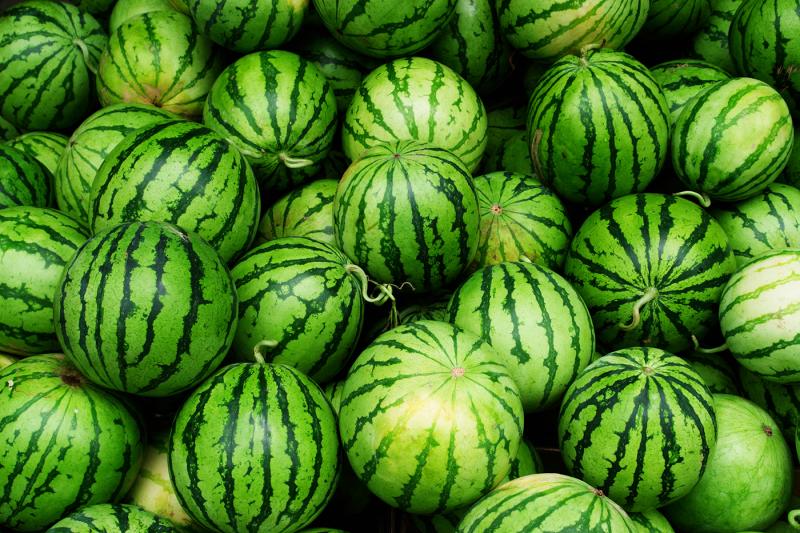In the 17th century, in what is modern Poland and Slovakia, a young robber named Janosik led a band of highwaymen. They were considered patriots who robbed rich merchants and shared their bounty with the poor. This was a noble and chivalrous group that never harmed the robbed victims and once even helped a priest who was injured.
To honor Janosik, there is a new watermelon from Poland called the Janosik watermelon (Citrullus vulgaris Janosik). This melon, like its namesake, breaks the rules. Although watermelons are tropical, heat-loving vegetables, through careful breeding and selection, Janosik melons grow well in northern gardens. You can pick ripe Janosik watermelons just 80 days after planting. The melons have dark-green rinds and sweet, brilliant-yellow flesh that is crisp, almost crunchy. These are good-sized melons, averaging 10 to 12 pounds.
Plant watermelons after the soil has warmed up and all danger of frost has passed. Choose a spot in full sun. Watermelons grow best in soil that is slightly acidic, with a pH between 6.0 and 7.5. Amend your garden soil with compost, aged manure or even seaweed before planting. Watermelons are heavy feeders, so they need lots of nutrients and respond well to fertilizer.
Sow the seeds about an inch deep spaced 3 feet apart in rows 3 to 4 feet apart. You can plant watermelons in rows or in raised hills. The raised hills allow better drainage, plus they warm up faster and hold the sun's heat longer than the surrounding soil. The seeds will sprout in 5-10 days. Most watermelons need lots of growing room, up to 20 square feet per plant. Luckily, Janosik watermelons grow on short vines, so they can be planted closer.
As the name implies, watermelons need a steady supply of water to grow. Aim for 1 to 2 inches of water each week. Keep the soil moist, but never soggy. Water at the base of the vines early in the day. Avoid getting the leaves wet to prevent diseases. Cut back on watering as the melons ripen, because dry weather will give you the sweetest product.
Mulching with black plastic will warm up the soil, keep weeds down and let the watermelons sit off the ground so they are less likely to rot. Watermelons do not continue to ripen after picking, so give them the thump test. If the watermelon sounds hollow when you thump it, that means it is ripe.
Plant Janosik watermelons, and in a few months, you will have beautiful, yellow-fleshed melons with the sweetest crisp flesh. In the garden and in life, it sometimes pays to break the rules, whether helping the poor or growing watermelons thousands of miles north of their native Africa.























































